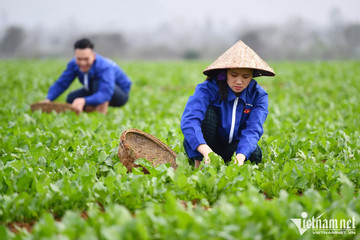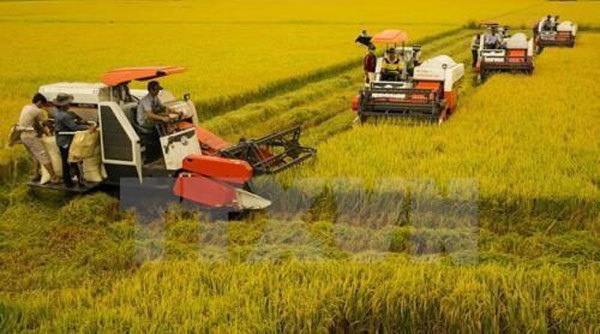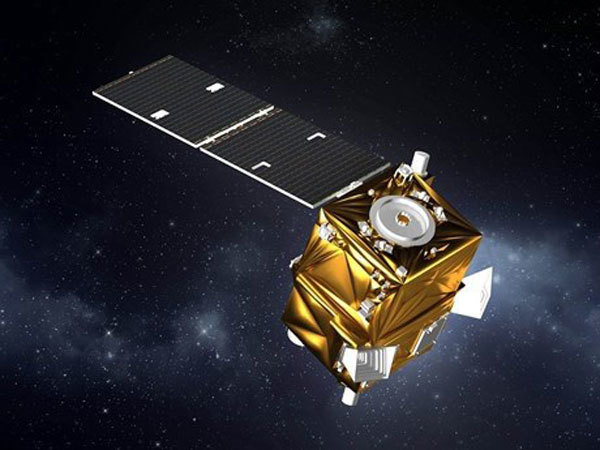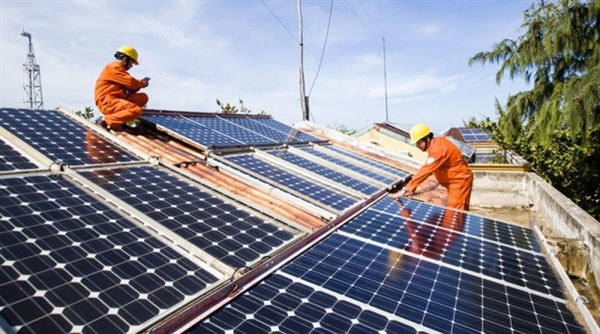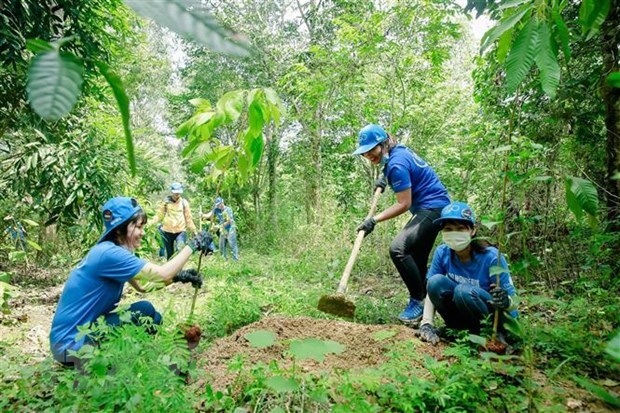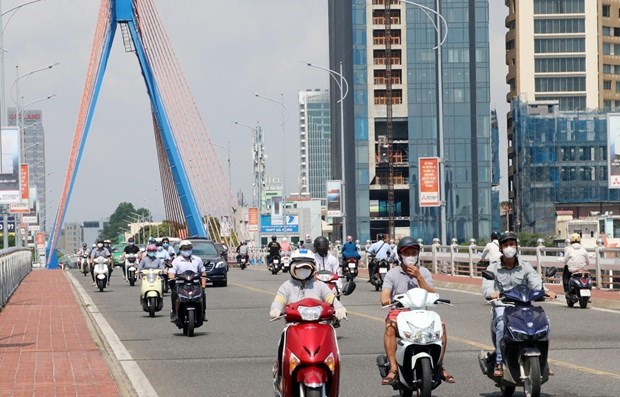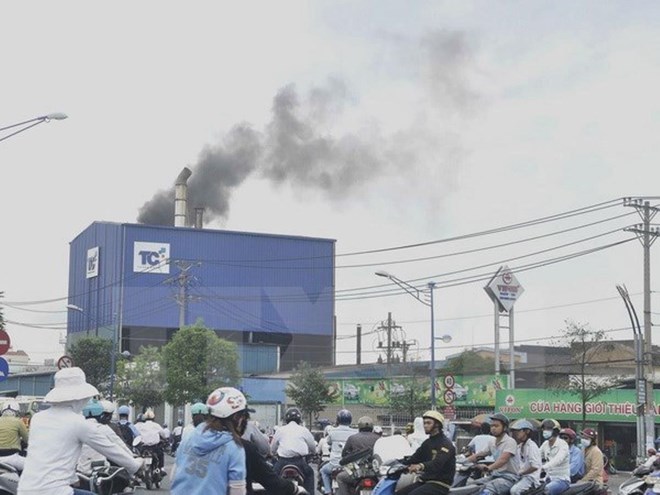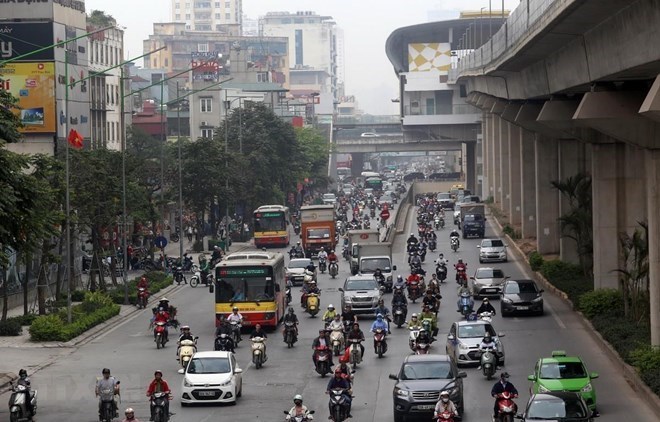- © Copyright of Vietnamnet Global.
- Tel: 024 3772 7988 Fax: (024) 37722734
- Email: [email protected]
greenhouse gas emissions
Update news greenhouse gas emissions
MARD seeks to transfer 6 million tons of CO2 to keep prices stable
The Ministry of Agriculture and Rural Development (MARD) has submitted a report to the Prime Minister for the authority to transfer 6 million tons of CO2 in the north central region created in the 2018-19 period.
Vietnamese businesses adopt ESG standards
ESG (E-Environmental; S-Social; G-Governance) standards remain unfamiliar to many Vietnamese businesses.
Farmers follow regenerative agriculture, maintain biodiversity
The regenerative agriculture model not only helps lower costs, and increase quality and profits, but also reduces greenhouse gas emissions and preserves and restores agricultural land.
Vietnam aims to reduce greenhouse gas emissions in rice sector
Agencies in Vietnam and international partners have been working together to seek effective measures to reduce the emission of greenhouse gases in rice production in the country.
Satellite images provide clear picture of greenhouse gas emissions
A research project by the Department of National Remote Sensing has for the first time used images provided by VNREDSat-1, Vietnam’s very first remote sensing satellite, in calculating carbon dioxide emissions.
Vietnam to further join int’l efforts against climate change: PM
Vietnam will continue its active participation in international efforts to combat climate change, so as to transform climate-induced “challenges” into “opportunities” for the sustainable development for all, PM Nguyen Xuan Phuc said.
New partnership to reduce greenhouse gas in building
European property developers are working with the Vietnamese Ministry of Construction to reduce greenhouse gas emissions in the residential property sector.
Investing in resilience to erratic future
As the tides of catastrophe recede, leaving Central Vietnam and indeed the entire country turned on its head by a raging pandemic and natural disasters, the need to rebuild emerges stronger than ever.
Few construction works are green
Only 155 construction works have been certified as green as of Q3 2020, according to IFC, a modest number compared with other Southeast Asian countries and the rest of the world.
Hanoi aims to reduce greenhouse gas emissions
Hanoi will strive to reduce greenhouse gas emissions by 15 per cent by 2030, according to local authorities.
Vietnam to use carbon-pricing tools in effort to cut greenhouse gas emissions
Vietnam, as one of the most vulnerable countries to climate change, is set to develop a roadmap to implement market-based carbon pricing tools as part of its effort to reduce greenhouse gas (GHG) emissions.
Vietnam exceeds initial commitment on greenhouse gas emissions
Vietnam plans to reduce total greenhouse gas emissions by 9 per cent compared to the "business as usual" scenario, equalling 83.9 million tonnes of CO2.
Vietnam ready to carry out REDD+
A meeting was held in Hanoi on June 26 to review the project on support for preparing the readiness to carry out the international framework “Reducing Emissions from Deforestation and Forest Degradation” (REDD+) in Vietnam Phase 2 (FCPF-2).
Vietnam eyes tackling transport pollution
 The Ministry of Natural Resources and Environment has proposed support policies to encourage environmentally-friendly means of transport which run on electric engines and use renewable fuels.
The Ministry of Natural Resources and Environment has proposed support policies to encourage environmentally-friendly means of transport which run on electric engines and use renewable fuels.
ADB provides loan for 50MW solar power plant in Tay Ninh
 The ADB has signed a 37.8 million-USD loan deal with TTC Energy Development Investment JSC (TTC Energy) to provide long-term financing to develop and operate a 50-MW photovoltaic solar power plant in Tay Ninh.
The ADB has signed a 37.8 million-USD loan deal with TTC Energy Development Investment JSC (TTC Energy) to provide long-term financing to develop and operate a 50-MW photovoltaic solar power plant in Tay Ninh.
HCM City urged to reduce GHG emissions from buildings
 The Japan International Cooperation Agency (JICA) has advised real estate developers in HCM City to apply advanced technologies while constructing commercial buildings to reduce greenhouse gas (GHG) emissions.
The Japan International Cooperation Agency (JICA) has advised real estate developers in HCM City to apply advanced technologies while constructing commercial buildings to reduce greenhouse gas (GHG) emissions.
Japan supports Vietnam to mitigate greenhouse gas emissions
 The Ministry of Natural Resources and Environment has approved a joint project with the Japan International Cooperation Agency to create a roadmap on greenhouse gas emission reduction in Vietnam.
The Ministry of Natural Resources and Environment has approved a joint project with the Japan International Cooperation Agency to create a roadmap on greenhouse gas emission reduction in Vietnam.
Hanoi strives to reduce greenhouse gas emissions
 With a population of over 7.7 million people along with 17 industrial parks, more than 1,300 trade villages, 5.3 million motorbikes and nearly 560,000 cars, Hanoi is suffering from negative impacts caused by climate change.
With a population of over 7.7 million people along with 17 industrial parks, more than 1,300 trade villages, 5.3 million motorbikes and nearly 560,000 cars, Hanoi is suffering from negative impacts caused by climate change.
Hanoi chokes on filthy air
 For lifetime Hanoian Thanh Van, days filled with fresh air and walks down the cool, tree-shaded streets of the capital are few and far between.
For lifetime Hanoian Thanh Van, days filled with fresh air and walks down the cool, tree-shaded streets of the capital are few and far between.
Roads for cyclists, pedestrians needed to ease urban traffic
VietNamNet Bridge – As urbanisation has progressed rapidly in the country’s big cities, overloaded transport infrastructure is increasing the risk of traffic accidents and worsening environmental pollution.


